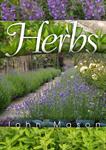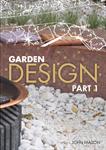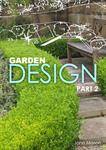Designing Gardens for the Right Mood
MOOD GARDEN DESIGN
There are many elements that contribute to the ambience or mood of a garden. Colour is perhaps most significant, however the choice of plants, the quantity of plants (or no plants), the permanent structures and ornamentation are also important.
Active vs. Passive
A garden with a barbecue area, a sandpit, a swing, a pool and a child’s play house would be seen as being ‘active’. It is clear that the garden is more utilitarian. Conversely, a garden with a bench beneath some shade trees, a pond, a sculpture, a herbaceous border and some specimen trees would create an ambience of tranquillity. It is more likely that the owners would spend time resting in the garden and admiring it. It would be considered ‘passive’.
Simple vs. Complex
A complex garden will clearly have lots of intricate areas created through using many different plant species. It may have a number of paths that lead to different areas of the garden. These areas may pertain to a number of different themes. There could be a number of different focal points. It could be planted so that different plants look their best at different times of the year, so as to maintain year round interest. Such a garden may have a number of effects on ambience. It may be quite stimulating for the onlooker encouraging them to look further and more deeply into the garden. It may activate their imagination and inspire them toward their own gardening aspirations. If the garden is extremely complex, however, it may also serve to overwhelm some individuals who would prefer something a little less complex so as to be able to relax.
On the other hand, a simple garden may have few plants, perhaps a large lawn area or paved area and little in the way of features. Such a garden would be more likely to evoke a feeling of relaxation and perhaps permit the onlooker to focus on their own thoughts. If the garden is too simple, however, it may make the onlooker feel disinterested or bored in the garden and it will therefore fail to attract people into it.
Light vs. Shade
The amount of light in the garden has quite a profound effect on mood. A garden that has much light could be associated with feelings of openness, joy, elation and optimism. A garden that has much shade would create feelings of enclosure, frustration, and gloom.
Movement vs. Static
Movement in the garden can be created in a number of ways. It can come about through the natural movement of trees and shrubs in the wind, through mobiles or through water fountains. It gives an air of vitality and of life. The associated sounds reiterate this sense of living; the rustle of the leaves in the trees, the splash of the water. On the contrary, a garden that has little movement may seem rather dull and lifeless.
Other Factors Affecting Mood
As well as the compositional elements, mood may be affected through the garden theme. A Japanese or Chinese garden may conjure up thoughts and feelings associated with the orient. A rigidly formal garden may evoke austerity, power and respect. A modern garden could trigger feelings of youth, vitality and chic.
The general state of the garden also plays an important role in the effect that it has on mood. For example, a well-maintained garden gives the impression of orderliness, attention and care. An overgrown garden with dilapidated structures, broken pots and pavers and so on, gives the feeling of neglect, decay and at worst, death (compare this too with the associations with history, battles and bygone times that are conjured up through the careful placing of cracked pillars, aged vases and other historical structures).
Humour can be injected into the garden using such tings as ornaments (anything from gnomes to manikins, toy cars to bizarre sculptures), planting up amusing containers such as a car tyre or old toilet, installing unusually twisted foliage or trees with funny shaped trunks, or perhaps even pruning a box tree into the shape of a helicopter or elephant.
Mystery can be achieved through concealed entrances, covered walkways, peepholes, murals separate ‘garden rooms’.
There are indeed numerous ways in which a myriad of moods can be instigated and the personality of the owner reflected in the garden.
The following books and ebooks have been written by our principal (John Mason) and staff, and are available through the school's online bookstore. Click on a book for details
|

What to Plant Where
|

Herbs
|
 Garden Design Part 1 Garden Design Part 1
|

Garden Design Part 2
|
 Tropical Landscaping Tropical Landscaping
|

Roses
|
You may also be interested in....